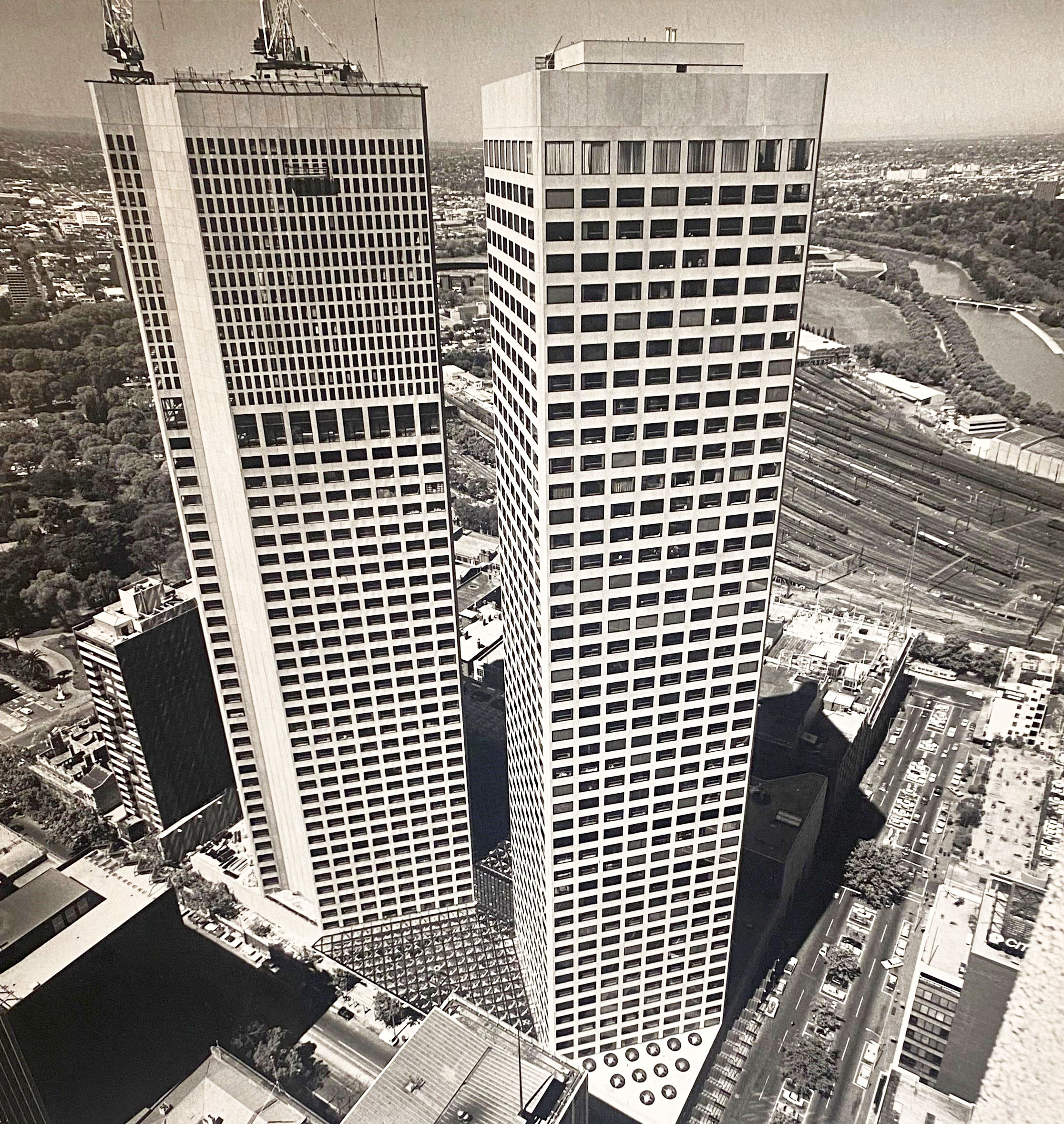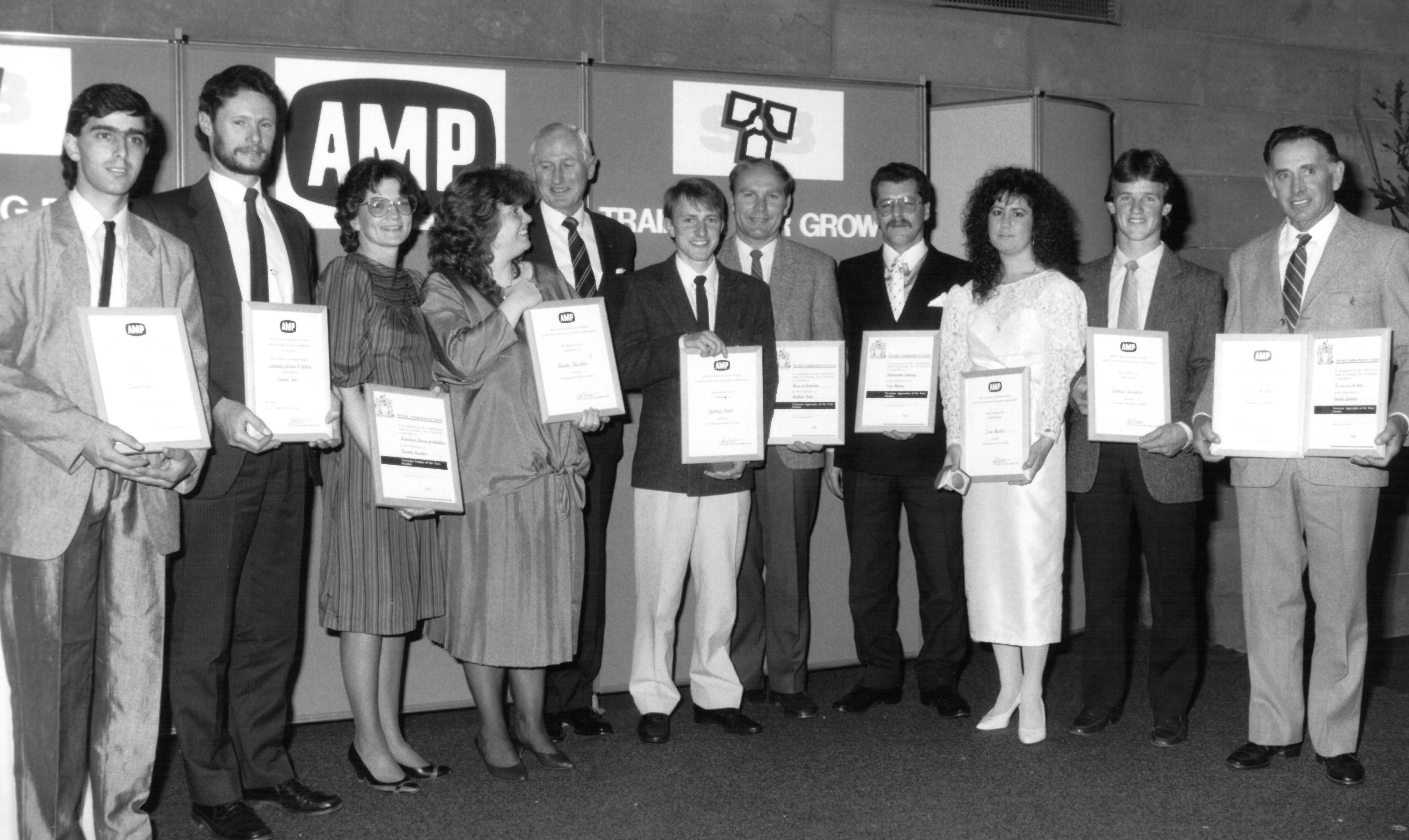The 1980s
In the late 1970s general manager Keith Steel stepped down after 45 years with AMP. He was succeeded by Alan Coates, who joined AMP as a teenager and worked his way up the ranks in Newcastle, Wollongong, London, Auckland, and Sydney before becoming general manager (with the title changed in the 1980s to managing director).
By this time AMP held around 5% of the total capital of all Australia’s leading companies and was investing more heavily in property and ventures such as the new aluminium smelter in Tomago, New South Wales. However, AMP was running out of sound local investment options and in the early 1980s gained approval from the Federal Government to invest significant funds overseas. In 1981 AMP held just $11 million in overseas investments, but this grew to an extraordinary $1.1 billion by 1985, mainly through investments in the United States, United Kingdom and Japan.
A major venture for AMP was a partnership with the US-based Chase Manhattan Bank. AMP had long held shares in Australian banks, and this was seen as an attractive partnership that would open new revenue for AMP, with plans to establish 35 branches over several years, employing 650 staff, and offering a range of financial services to Australians.
In 1984 AMP made the significant decision to merge its Ordinary and Industrial Departments, which had operated separately since the establishment of the Industrial Department in 1905. Industrial policies, which AMP had renamed collector policies, had been waning for decades, so it seemed no longer necessary to operate the two departments separately.
Over the course of its long history AMP had successfully overcome competition from many other Australian and overseas players in the insurance field, but the 1980s were particularly challenging. For many years no other company held assets worth even half of AMP’s assets, but its position was increasingly challenged, particularly after the merger of two of its long-term rivals, National Mutual Life and the Temperance & General Mutual Life Assurance Society. Neither had been in business as long as AMP, but both were signifcant businesses with large customer bases. National Mutual Life had long been second only to AMP in the insurance field. The rivalry with National Mutual grew throughout the 1980s and to retain and poach top agents AMP offered very generous incentives. Ultimately AMP triumphed over National Mutual, which simply didn’t have the reserves to match AMP and was deeply impacted by the recession of the early 1990s.
In 1987 Ian Stanwell took over as managing director and chief actuary Kerry Roberts and chief of insurance operations Ian Salmon were both given positions as general managers. Stanwell had been with AMP since leaving high school in 1954. He took the top job at a difficult time, in the same year as the Black Monday stock market crash in which the Dow Jones Index fell almost 23% in value in just one day. Australia fared relatively well, as did AMP, largely due to its heavy investment in property, and in 1987 it finished 27% up on these investments. It paid to be Australia’s largest private property investor.
In the mid-1980s AMP pursued the purchase of British life office Pearl Assurance, which was established in 1864 and had a large industrial assurance business in Britain, Europe and the United States. Already holding a 5% stake in Pearl, in 1986 AMP was about to purchase an additional 12.5% when the board paused its plans in favour of merging with the London Life Association, which had been in business since 1806 but found itself short of capital and keen to find a partner. AMP finally moved ahead with Pearl Assurance in 1989 and after purchasing 18% of the company, launched a takeover bid. With Pearl valued at £1.3 billion, it was the largest acquisition in AMP’s history and the largest in the history of life insurance in Britain (Blainey, 1999). The deal grew AMP’s customer base from two million to five million.











